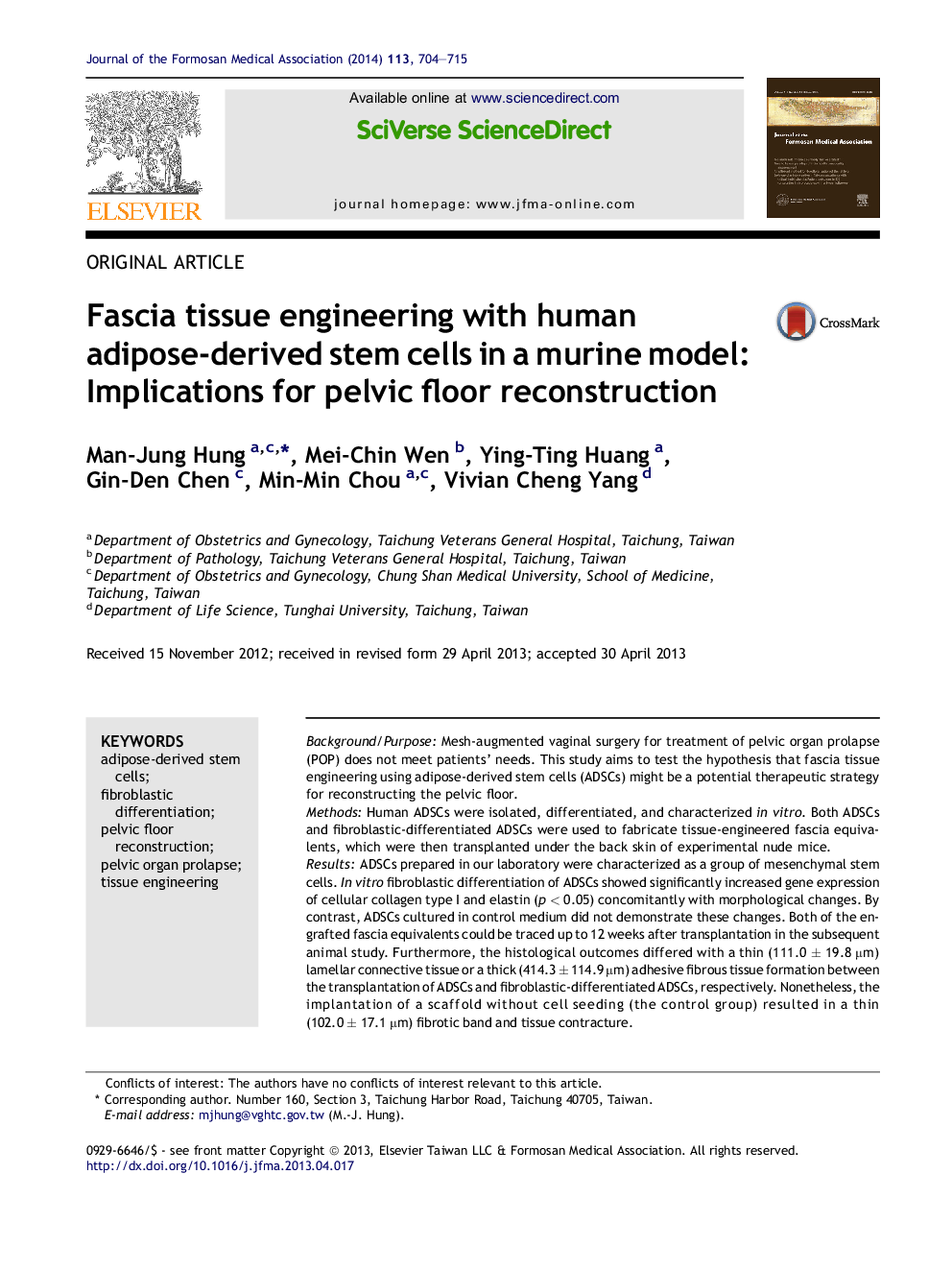| کد مقاله | کد نشریه | سال انتشار | مقاله انگلیسی | نسخه تمام متن |
|---|---|---|---|---|
| 3478825 | 1233416 | 2014 | 12 صفحه PDF | دانلود رایگان |
Background/PurposeMesh-augmented vaginal surgery for treatment of pelvic organ prolapse (POP) does not meet patients' needs. This study aims to test the hypothesis that fascia tissue engineering using adipose-derived stem cells (ADSCs) might be a potential therapeutic strategy for reconstructing the pelvic floor.MethodsHuman ADSCs were isolated, differentiated, and characterized in vitro. Both ADSCs and fibroblastic-differentiated ADSCs were used to fabricate tissue-engineered fascia equivalents, which were then transplanted under the back skin of experimental nude mice.ResultsADSCs prepared in our laboratory were characterized as a group of mesenchymal stem cells. In vitro fibroblastic differentiation of ADSCs showed significantly increased gene expression of cellular collagen type I and elastin (p < 0.05) concomitantly with morphological changes. By contrast, ADSCs cultured in control medium did not demonstrate these changes. Both of the engrafted fascia equivalents could be traced up to 12 weeks after transplantation in the subsequent animal study. Furthermore, the histological outcomes differed with a thin (111.0 ± 19.8 μm) lamellar connective tissue or a thick (414.3 ± 114.9 μm) adhesive fibrous tissue formation between the transplantation of ADSCs and fibroblastic-differentiated ADSCs, respectively. Nonetheless, the implantation of a scaffold without cell seeding (the control group) resulted in a thin (102.0 ± 17.1 μm) fibrotic band and tissue contracture.ConclusionOur results suggest the ADSC-seeded implant is better than the implant alone in enhancing tissue regeneration after transplantation. ADSCs with or without fibroblastic differentiation might have a potential but different role in fascia tissue engineering to repair POP in the future.
Journal: Journal of the Formosan Medical Association - Volume 113, Issue 10, October 2014, Pages 704–715
